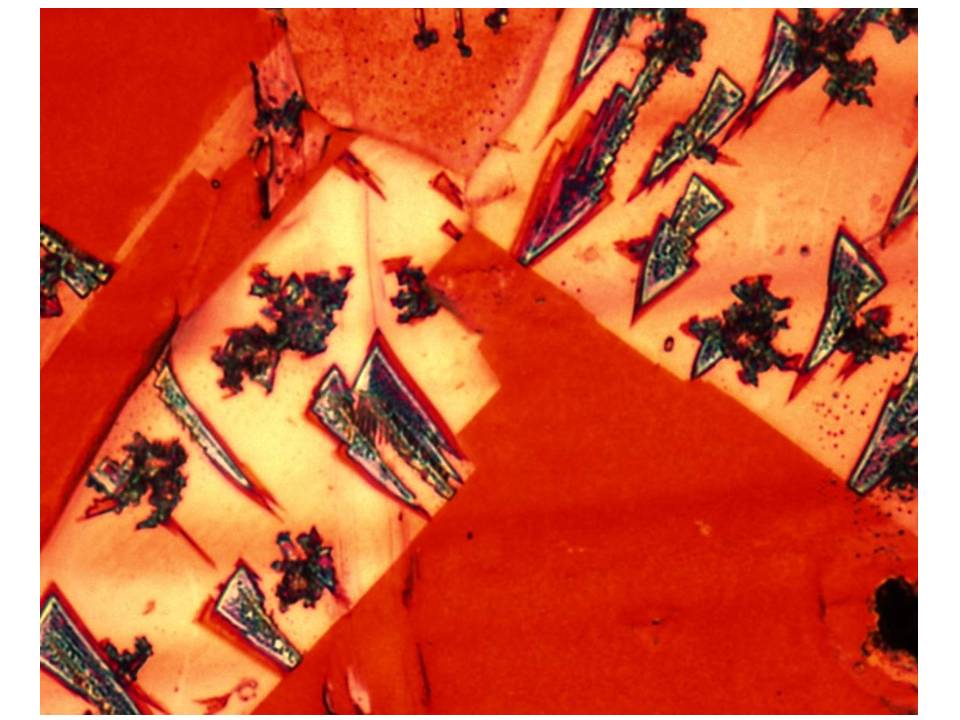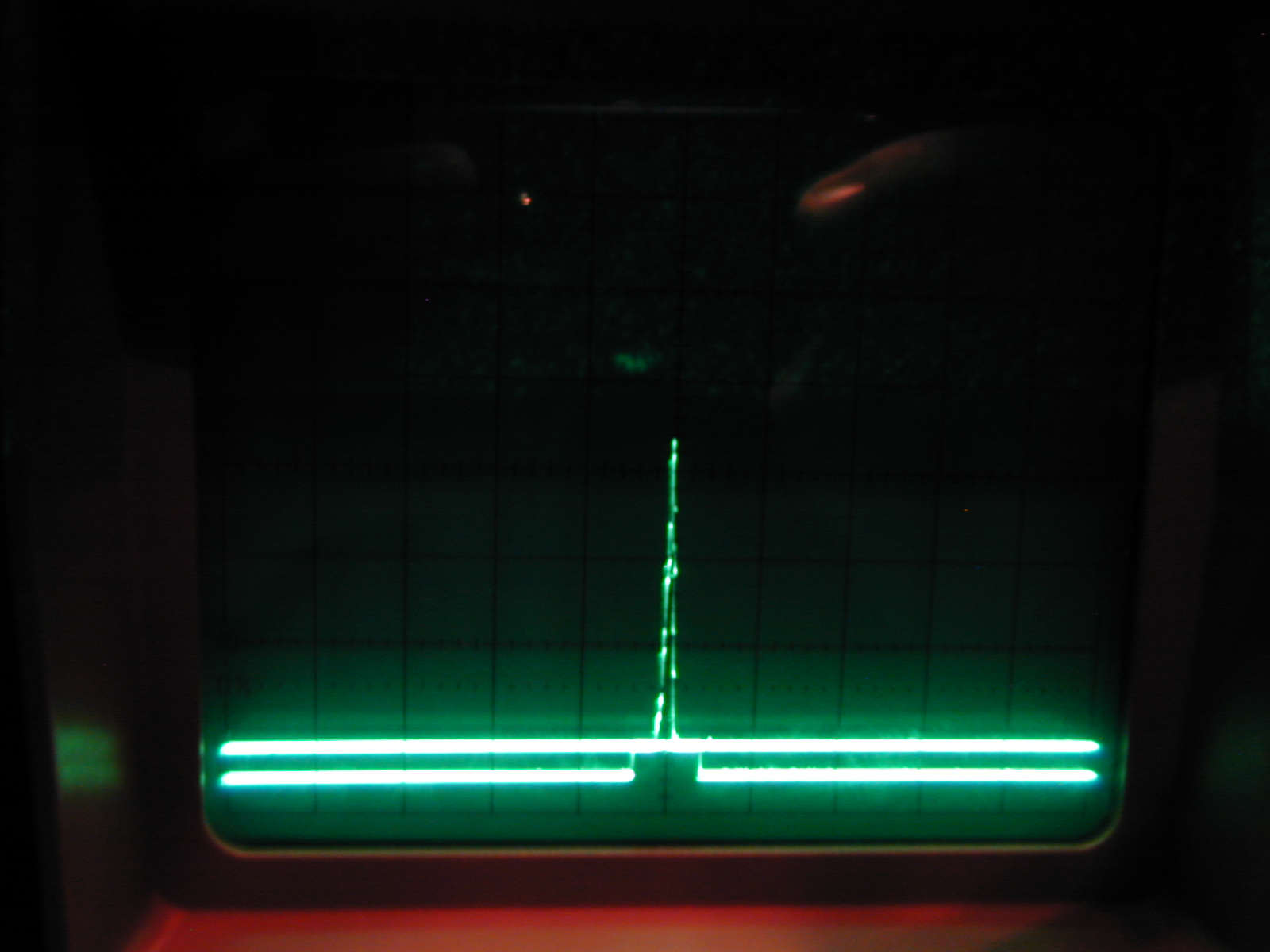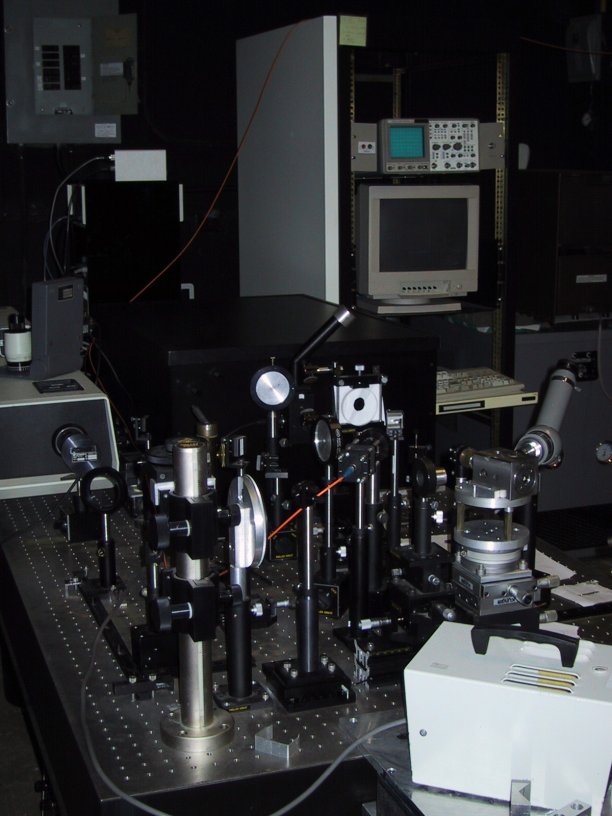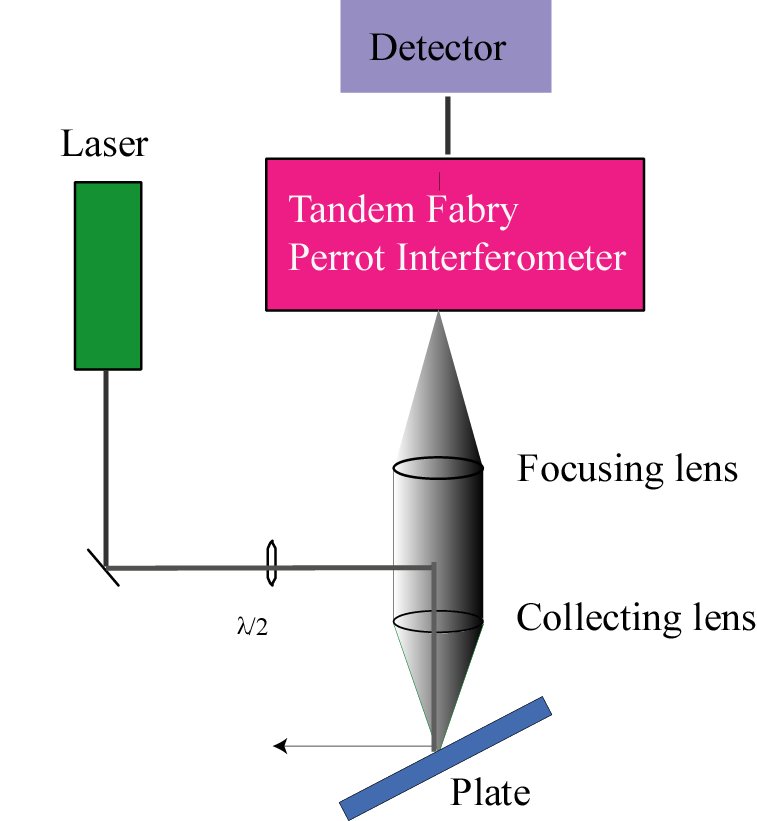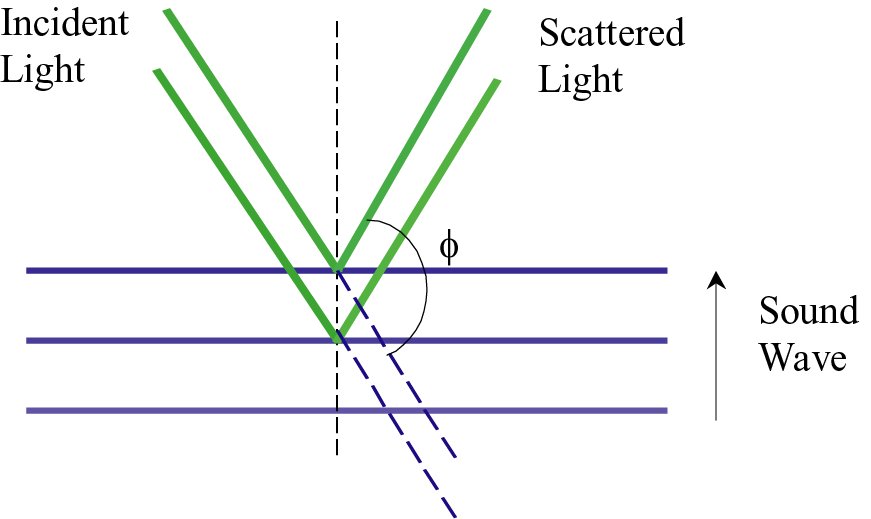http://www.soest.hawaii.edu/~zinin/Zi-Brillouin.html
|
History: Brillouin light scattering is generally referred to as inelastic scattering of an incident optical wave field by thermally excited elastic waves in a sample. The first theoretical study of the the light scattering by thermal phonons was done by Mandelstam in 1918 (see Fabelinskii, 1968; Landau et al,1984), however, the correspondent paper was published only in 1926 (Mandelstam, 1926). L. Brillouin predicted independently light scattering from thermally excited acoustic waves (Brillouin, 1922). Later Gross (1930) gave the experimental confirmation of such a prediction in liquids and crystalls. |
Photo of the Brillouin spectrometer (Sandercock Scientific Instruments). |
|
Spectrometer: In almost Brillouin experiments, the Fabry-Perrot interferometer has been instrument of choice (Grimsditch, 2001). However, conventional Fabry Perot interferometers do not achieve the contrast needed to resolve the weak Brillouin doublets. Sandercock first showed that the contrast can be significantly improved by multipassing (Sandercock, 1970). The usefulness of coupling two synchronized Fabry-Perot, thus avoiding the overlapping of different orders of interference, was also recognized (Sandercock, 1982). |
Sketch of the Brillouin spectrometer. |
Principles:
Elasto-optical scattering mechanism: In the case of a transparent solid, most of the scattered light emanates from the refracted beam in a region well away from the surface, and the kinematic conditions relating wave vector and frequency shift of the light pertain to bulk acoustic wave scattering (Fabelinskii, 1968; Hayes, W. and R. Loudon, 1978;Grimsditch, 2001). The scattering in this case is mediated by the elasto-optic scattering mechanism, in which dynamic fluctuations in the strain field bring about fluctuations in the dielectric constant, and these in turn translate into fluctuations in the refractive index. These fluctuating optical inhomogeneities result in inelastic scattering of the light as it passes through the solid.
Interaction of the sound waves with light.
The phonons present inside a solid move in thermal equilibrium with very small amplitudes creating fluctuations in the dielectric constant, which is viewed as a moving diffraction grating by an incident light wave. Therefore Brillouin scattering can be explained by the two concepts of Braggs reflection and Doppler shift:
- SBS can be viewed as a Braggs reflection of the incident wave by the diffraction grating created by thermal phonons. According to the Braggs law, the grating spacing d can be expressed in terms of Braggs angle (φ/2)and wavelength of the laser light inside solid λ = λo /n, λo where λo is the laser wavelenght in vacuum, and n is the index of refraction in the solid.
2d sin (φ/2) = λo /n
- The moving grating scatters the incident light with a Doppler effect, giving scattered photons with shifted frequencies Δƒ. Brillouin spectrum gives frequency shift (Δƒ) of the thermal phonon, and its wavelength (d space) can be determined from the experiment geometry (see expression above). Then the velocity of the phonon Vl has a form
Vl = λo Δƒ /(2 n sin φ/2)
For back scattering configuration, φ = π, this equation yealds
Vl = λo Δƒ /(2 n)
Ripple mechanism: Unlike the elasto-optic effect, this mechanism does not occur in the bulk but at the surface of the specimen (Mutti et al, 1995; Comins, 2001, Beghi, 2003). The phonons present at the surface of the sample move in thermal equilibrium with very small amplitudes creating corrugation of the surface, which can diffract incident light.
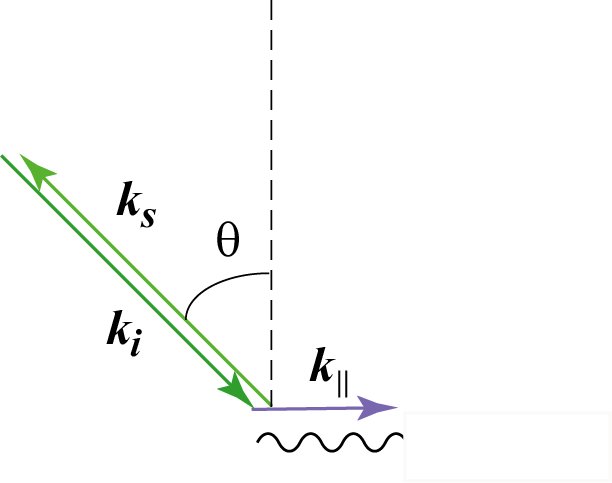
Kinetics of a light scattering from a surface.
The moving corrugating surface scatters the incident light with a Doppler effect, giving scattered photons with shifted frequencies. For backscattering from surface acoustic phonons, the phase velocity (VSAW) of surface acoustic wave can be written as
where θ is the angle between the incident laser beam and the normal to the surface.
Applications: Surface Brillouin Scattering (SBS) is a non-contact measurement technique that exploits light scattering to probe the properties of surface acoustic waves (SAWs), either at the surface of homogeneous solids or in thin supported layers. The near-surface elastic properties of solids often differ markedly from those of the underlying bulk material. They are a sensitive indicator of residual stress, annealing and other near-surface physical conditions. SBS is widely used in the characterization of thin (sub-micron) supported layers, whose elastic properties can differ from those of the corresponding bulk material. It can alternatively be exploited to measure other properties, like the layer thicknesses or mass density, or the presence of interfacial layers. The systems that have been studied to date are many and diverse, and include inorganic materials like silicon and silicides, a variety of carbonaceous materials like diamond, CVD diamond and diamond-like films, various types of hard coatings like carbides and nitrides, Langmuir-Blodgett films, and various types of multilayers. SBS can probe acoustic waves of frequencies up to 100 GHz and characterize films of thickness as thin as a few tens of nanometers.
References
- M. G. Beghi, A. G. Every, and P. V. Zinin. "Brillouin Scattering Measurement of SAW Velocities for Determining Near-Surface Elastic Properties", in T. Kundu ed., Ultrasonic Nondestructive Evaluation: Engineering and Biological Material Characterization, CRC Press, Boca Raton, chapter 10, 581-651 (2003).
- Brillouin L., Diffusion de la lumiere et des rayonnes X par un corps transparent homogene; influence del'agitation thermique. Ann. Phys. (Paris) 17, 88 (1922).
- Comins, J. D. "Surface Brillouin Scattering". Handbook of Elastic Properties of Solids, Liquids, and Gases. Volume I: Dynamic Methods for Measuring the Elastic Properties of Solids. M. Levy, H. Bass, R. Stern and V. Keppens, Eds. New York, Academic Press. I 349-378 (2001).
- Gross, E. "Über Änderun der Wellenlänge bei Lichtzerstreuung in Kriztallen". Z. Phys. 63 685 (1930).
- Gross, E. "Change of wave-length of light due to elastic heat waves at scattering in liquids". Nature 126(201) 400 (1930).
- Grimsditch, M. "Brillouin Scattering". Handbook of Elastic Properties of Solids, Liquids, and Gases. Volume I: Dynamic Methods for Measuring the Elastic Properties of Solids. M. Levy, H. Bass, R. Stern and V. Keppens, Eds. New York, Academic Press. I. 331-347 (2001).
- Fabelinskii, I. L. Molecular Scattering of Light. New York, Plenum (1968).
- Hayes, W. and R. Loudon. Scattering of Light by Crystals. New York, Wiley. (1978)
- Landau, L. D., E. M. Lifshits and L. P. Pitaevskii. Electrodynamics of continuous media. Pergamon, Oxford, (1984).
- Mandelstam L.I. "Light scatteirng by inhomogeneous media", Zh. Russ. Fiz-Khim. Ova. 58, 381 (1926) (in Russian)
- Mutti, P., C. E. Bottani, G. Ghislotti, M. Beghi, G. A. D. Briggs and J. R. Sandercock. "Surface Brillouin Scattering - Extending Surface Wave Measurements to 20 GHz". Advances in Acoustic Microscopy. A. Briggs, Ed. New York, Plenum Press. I 249-300 (1995).
- Sandercock, J. R. "Brillouin scattering study of SbSI using a double-passed, stabilised scanning interferometer". Opt. Commun. 2 73-76 (1970).
- Sandercock, J. R. "Trends in Brillouin-Scattering - Studies of Opaque Materials, Supported Films, and Central Modes". Light Scattering in Solids III. Recent Results. M. Cardona and G. Guntherodt, Eds. Berlin, Springer -Verlag. 51 173-206 (1982).
